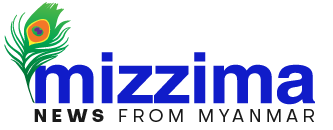TNLA troops in Tanyan Township, northern Shan State, pictured in early 2022/Photo:AFP
Ai Sai ( Mao Land ) for Mizzima
Northern Shan region has been teeming with uncertainties and anarchy for decades.
Throughout history, whenever central power collapses, fighting breaks out. For instance, the Burmese kingdom’s power deteriorated at the sunset of the Konbaung dynasty just before the British colonial era, some of the northern Shan regions were liberated from the Burmese Kingdom. But they couldn’t substitute another power.
Hsen Wi was the earliest Shan state which was liberated from the Burmese Kingdom’s umbrella. Hsen Wi was also the biggest state in Northern Shan its covered territories to the south, which become known as Mong Yai, Kesi Mansan, Mong Hsu, Mong Nawng, Mong Kawng, and Lai Kha. To Hsen Wi East, Kokang and the two Wa states that came under its jurisdiction later. To the west were Hsi Paw, Mong Mit, and Tawng Peng( Ta’ang Palaung). Collectively, these areas made up Northern Shan.
Does History repeat itself?
After the 2021 post-coup, erosion of central power in Myanmar and the deterioration of the Myanmar Army, old Hsen Wi state, the current major operation area of the Three Brotherhood Alliance, became the first liberated area for rebel alliances after they drove out the Myanmar army’s major outposts, camps, battalions, and commands.
But, locals in Nothern Shan State still face uncertainties and unsound conditions, despite having gained some liberty.
They worry about the combination of the SAC’s threats and competition between different ethnic armed groups in the area. Inter-ethnic tension is at boiling point. The area is multi-ethnic area, and comprised of more than five different ethnic groups. The area also serves as one of the important economic gateways between China and central Myanmar.
At least, four major ethnic armed groups are active throughout the areas seized by the Three Brotherhood Alliance. Before Operation 1027, some of these groups did not have cordial relations with each other.
For instance, the Kachin believe that some parts of the Northern State are part of the larger Kachin State and want an autonomous Kachin ‘sub-state ’in northern Shan State.
The Palaung or Ta’ang ethnic communities also want the region to create their own state.
The local Shan communities are unhappy with the Kachin and Ta’ang’s claims. When Operation 1027 succeeded and as new administrations were installed across the area by the Kokang-led rebels, relations have worsened.
How has Operation 1027 changed armed group relations
All of the active rebel groups in Northern Shan and Kachin states are the same umbrella group of the so-called Wa rebel United Wat State Army-led FPNCC ( Federal Political Negotiation and Consultation Committee) alliance.
The 1027 operation has changed the power dynamic among the FPNCC members.
Previously, the UWSA, KIA, and SSPP/SSA were the FNPCC powerhouses, but following the 1027 offensive the ethnic armed organisations that make up the Three Brotherhood Alliance have seen their political power increase which has exposed increasing factionalism between the groups fighting the junta.
Latest developments
There was fighting between the MNDAA and the Shan State Progress Party/Shan State Army (SSPP/SSA) in Hsen Wi Township on 26 and 27 March.
Unfortunately the UWSA, as the group coordinating the FPNCC, cannot sort out these problems because they are beholden to groups that produce and smuggle drugs to fund themselves, such as the TNLA.
This means that there might in the future be more fighting between different ethnic armed organisations in northern Shan State.
Short-sighted vision
So long as narrow ethnonationalism, area expansion, and short-sightedness are the norms, the inter-ethnic or inter-ethnic armed groups conflicts are hard to resolve. Besides it would be hard to terminate prolonged military and Myanmar dominant colonial rules in Shan States either.





